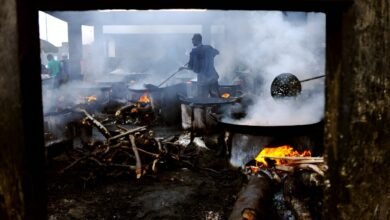Inside Africa Explores Luxury Train Journeys Across South Africa
South Africa’s most beautiful and interesting locomotives and the history of the train industry in the country.

In new episode of Inside Africa, CNN explores some of South Africa’s most beautiful and interesting locomotives and the history of the train industry in the country.
Trains have played a major role in shaping the development of the African continent. Today, they do more than simply transport goods and commuters and across South Africa, committed enthusiasts are working to keep classic trains on the tracks and attract visitors from around the world.
For more than 150 years, the history of South Africa’s railways has been filled with classic trains. The Rovos Rail Story dates back to the mid-1980’s when founder Rohan Vos purchased a locomotive and four coaches and decided to apply for permission to use track belonging to the South African Railways. “I applied and they came back and said ‘yes, you can’, but the tariff was very high and I complained and they said ‘well if you’re not happy with the tariff why don’t you sell tickets’ and that was the end of the hobby, we launched in 1989, thirty-four and a half years ago.”
For those more than thirty years, Vos’ acquisition of locomotives and carriages has never stopped. He tells CNN, “We are still finding coaches on sidings all over the country that are rusted to hell and gone and we buy them, and we’ve got to make them roadworthy or rail-worthy.”
From its roots in the preservation of steam locomotives, Rovos Rail has evolved and today a fleet of Australian-made diesel locomotives form the core of their fleet. And, as the business has grown, it has continued to evolve and to innovate, something it has done since its humble beginnings. Joe Mathala, Operations Manager, describes the growth, “I’ve seen the company grow from running one train a month in 1989/1990 to today running six trains at the same time.”
As its fleet grew, so too did the number of Rovos Rail Routes. In 1993, they travelled to Dar es Salaam for the first time. Vos says, “It’s the best decision I ever made because we’re running five trips a year to Dar es Salaam now and we’ve also done from Dar es Salaam across the continent to Angola. It was the first train in history to have done that.”
Passengers are treated to a luxury on-board dining experience and along with an extensive and varied selection of the finest South African wines, passengers can enjoy gourmet meals prepared under somewhat challenging conditions. Lawrence Zulu, Train Manager, says, “We all have one common goal, which is to make each and every passenger that’s on board the train get the service that they paid for.”
A new chapter in the story of South African trains is the Kruger Shalati – the train on the bridge. Situated in South Africa’s largest national park, it offers a luxurious, artfully refurbished train with a breath-taking view. The hotel is the brainchild of businessman and CEO of Motsamayi Tourism Group Jerry Mabena and it’s an idea that had its roots a hundred years ago. He explains, “Around that time people used to go into the park using steam trains. So, the idea for us was to re-enact the experience in some form or other.”
The train carriages have been skilfully converted into suites with comfortable beds, ensuite bathrooms, and private decks that overlook the river and the wildlife below. “The way Kruger Shalati is positioned, on a bridge that faces north to south, all of our windows face towards the east which is ideal for the sun coming up and our guests start their day with this amazing open-air choir,” says Gavin Ferreira, concession general manager.
The hotel also offers a gourmet dining experience allowing guests to savour delicious meals while taking in the breath-taking scenery. The focus is on South African cuisine and makes use of some unusual ingredients. Chef Vusi Mbatha talks about the menu, “Two of the most popular dishes here at Shalati, the Lesotho salmon trout which we’ve paired with garden peas, pumpkin puree, fondant potatoes and finished off with a very nice light and a sharp lime beurre blanc. And then we’ve got the venison shank.”
The glass-walled, train rooms allow for views along the length of the river, and a deck and pool offer a swimming experience unlike any other. Mabena speaks about the unique experiences on offer, “Having hippos grunting underneath the carriage attracts people who want to be in the wild but don’t want to be immersed in the wild, you kind of want to be able to look at the animals, but from a position of safety”.
What sets Kruger Shalati apart is its remarkable location and the concept behind ‘the train on the bridge’. Mabena says it’s all been worth the work put into it, “The culture of steam trains and the culture of historical trains I think is beginning to re-emerge. We don’t have a moving steam train, but one day I think we will…”


lpt4c8